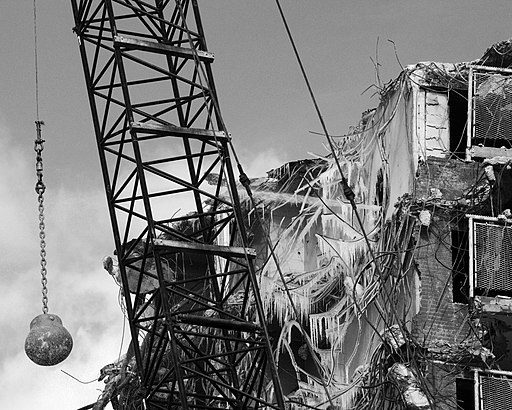- Stars (0)
7 Downloads
Owner: RCSWD
Version: 1.0
Last Updated: 11-09-2019 8:39
- Stars (0)
7 Downloads
Owner: RCSWD
Version: 1.0
Last Updated: 11-09-2019 8:39
- Stars (0)
6 Downloads
Owner: RCSWD
Version: 1.0
Last Updated: 11-09-2019 8:38
All materials are easier to reuse or recycle when they are sorted and separated. It’s cheaper to dispose of sorted building materials when they can be used beneficially, as opposed to sending them to the landfill.
With so many old buildings around Vermont, it’s not unusual to see a weathered barn with a slate roof kneeling by the side of the road. While pieces of buildings inevitably break, most parts can be reused repeatedly to benefit the local community. Unfortunately, usable building materials end up in landfills or incinerators every day from Construction and Demolition (C&D) projects that sacrifice conservation for speed. There are ways to conserve money and natural resources for these projects, though, such as Deconstruction and Reuse.
Deconstruction Works is a non-profit that will take apart your building piece by piece so that the most materials possible can be donated or sold, and reused for other projects. They have deconstructed entire churches, small backyard sheds, and even just interior spaces for residential and commercial customers. While their service may cost slightly more than quick demolition, the tax write off you receive from donating the materials can easily cover the extra dollars. If you have a project in mind, don’t hesitate to contact them to discuss the possibility of responsible deconstruction.

Even before breaking ground for a new structure, there is an opportunity to ensure that it doesn’t end up going to waste after its first use. The EPA offers best management practices for the design and deconstruction of buildings to prevent these materials from entering the landfill. Some ideas include creating a disassembly plan, keeping materials at standard measurements, and minimizing the use of different materials, particularly adhesives and sealants. Starting a conversation early on with the building contractor is important to incorporate these ideas into the entire process.

Other than reusing building materials, recycling them into different applications is another alternative that can conserve resources. For instance, wood can be chipped and used as fuel in biomass facilities; asphalt and concrete can be crushed and incorporated as aggregate in new pavement; gypsum board (aka sheetrock) can be recycled right back into whole pieces again. Metal is easily recycled in most areas of the country with other scrap metal. These materials must be absolutely clean with no paint, adhesive or other contaminant residue for the best recyclability.
Locally, there are two facilities that will accept concrete, asphalt and other aggregate for recycling: Markowski Construction in Florence (802.483.6469) or Wilk Paving in Center Rutland (802.438.5454). Two facilities near Burlington receive additional sorted C&D materials that are recycled: Myers C&D Recycling Facility (802-655-4312) and the All Cycle Transfer Station (802-651-5412).
According to the Construction & Demolition Association, there are over 500 million tons of usable building and road construction materials recycled annually in the United States of America. That sounds like a lot, but it is difficult to measure how much C&D materials are put in landfills or incinerated, as they often are mixed with general Municipal Solid Waste (MSW). In 2018, Vermonters disposed of about 46,823 tons of C&D materials with MSW in the landfill, which is roughly half of the total C&D debris generated (source: 2018 VT Waste Characterization Study).

- Stars (0)
11 Downloads
Owner: RCSWD
Version: 1.0
Last Updated: 15-08-2019 13:38
"You have one life and, like a tree, you can create abundance, a profusion. You are a known positive. No need to think of yourself as misplaced in the natural world, or that you cause destruction with your presence. Accept that deep in your heart and mind. Then go forward. Be successful. We hope to enjoy all that you share. And tell your children that things are looking up." -- William McDonough and Michael Braungart; The Upcycle
While there is an unprecedented amount of material going into landfills today, there are many opportunities to put items to beneficial use. Browse our website for some ideas to do so; this blog will inform you of the magnitude and character of bulk disposal in Vermont and the United States.
In 2018, there were 422,258 tons of municipal solid waste (MSW) disposed of in Vermont. This doesn't include construction and demolition (C&D) disposal, and 70% of MSW and C&D in Vermont go to the state's only landfill in Coventry. Casella Waste Systems owns and operates the 78-acre landfill which is undergoing a proposal to expand 51 acres which would extend it's capacity for 22 years, depending on the amount of waste generated and accepted. Some materials in Vermont also end up in a New Hampshire landfill.
The following is taken directly from the Save On Energy web page on landfills:
Provided by SaveOnEnergy